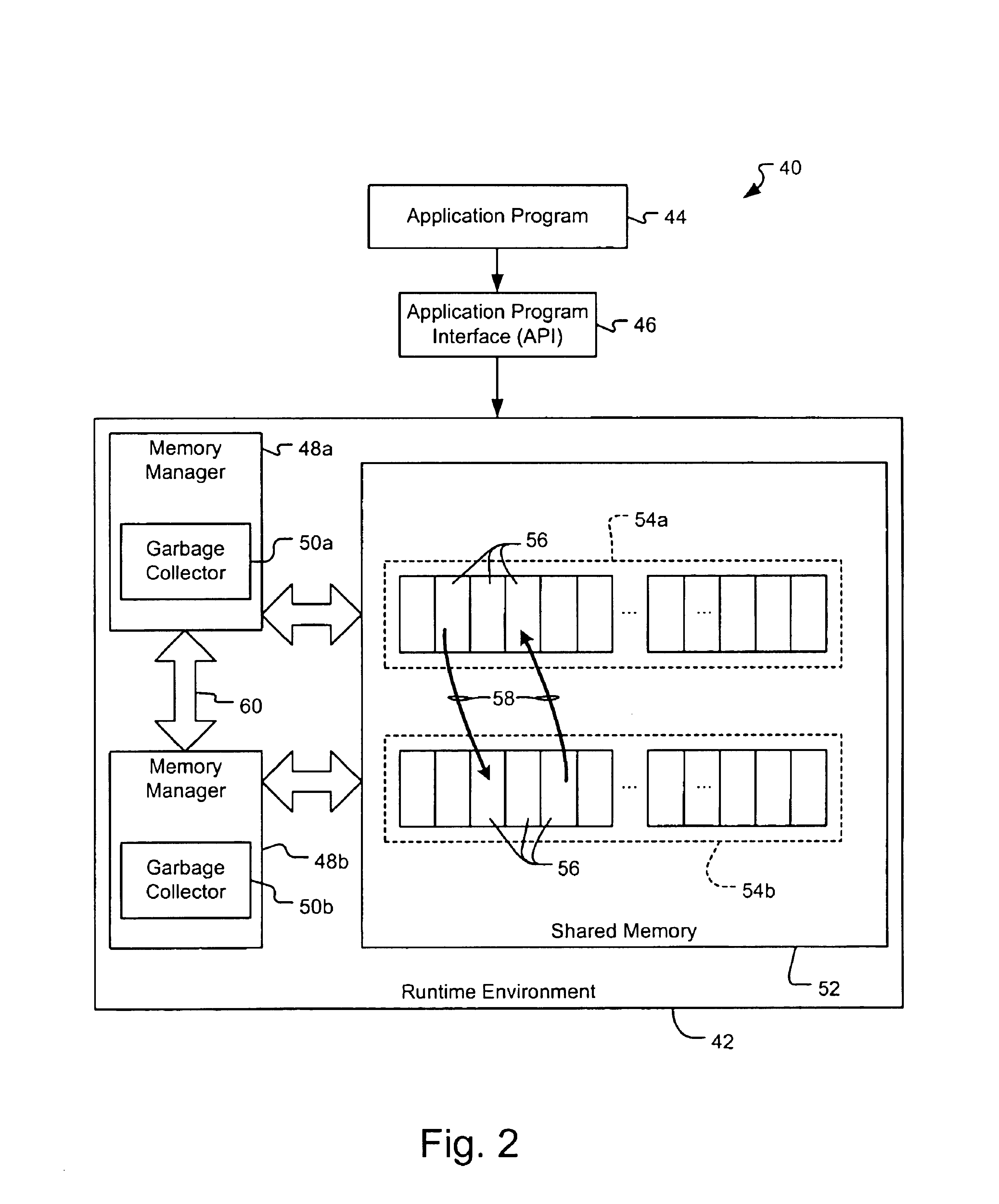Method and system for multiprocessor garbage collection
a multi-processor and garbage collection technology, applied in the direction of data processing applications, memory allocation/allocation/relocation, instruments, etc., can solve the problem of significant reduction of the efficiency of the multiple processor system
- Summary
- Abstract
- Description
- Claims
- Application Information
AI Technical Summary
Benefits of technology
Problems solved by technology
Method used
Image
Examples
Embodiment Construction
A computer system 20 that performs a process of reclaiming unused memory portions, pages or objects (collectively referred to herein as “objects”) that are allocated to application programs or other processes, i.e., garbage collection, according to the present invention is shown in FIG. 1. The system 20 has multiple processors 22 and a shared memory 24. In an embodiment of the invention, the system has two processors 22a and 22b as shown in FIG. 1, but in other embodiments, the system may have more than two processors. The processors 22 share the same memory 24 and each of the processors 22 performs garbage collection over predetermined portions of the memory 24 in accordance with the present invention, as described below. In alternative embodiments having more than two processing units, all processing units may perform garbage collection but not all processing units are required to participate in garbage collection. Indeed, while more than one processing unit participates in garbag...
PUM
 Login to View More
Login to View More Abstract
Description
Claims
Application Information
 Login to View More
Login to View More - R&D
- Intellectual Property
- Life Sciences
- Materials
- Tech Scout
- Unparalleled Data Quality
- Higher Quality Content
- 60% Fewer Hallucinations
Browse by: Latest US Patents, China's latest patents, Technical Efficacy Thesaurus, Application Domain, Technology Topic, Popular Technical Reports.
© 2025 PatSnap. All rights reserved.Legal|Privacy policy|Modern Slavery Act Transparency Statement|Sitemap|About US| Contact US: help@patsnap.com



